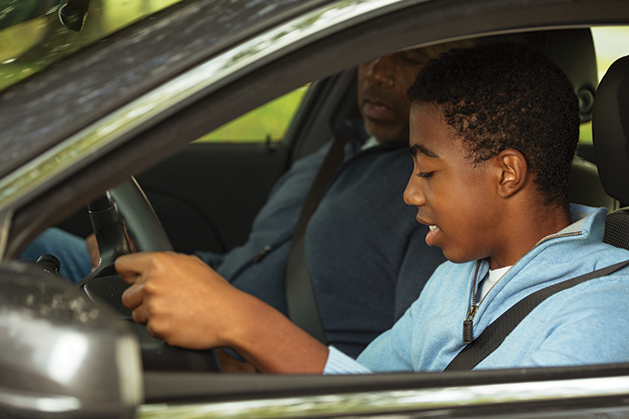
As teens get their first glimpse of mobile adulthood, parents hold their breaths. Learning how to drive is an exciting, and at the same time, difficult topic. There are privileges to becoming a licensed driver, and precautions for young people and their parents.
For families with members approaching driving age, enrolling in a driver's education class is a good first step. Most classes include a state approved 30 hours of classroom instruction along with six hours of behind-the-wheel time—one-on-one teaching by an instructor in a moving vehicle. These sessions often reinforce defensive and distraction-free driving. Many classes also provide instruction time for parents that includes insurance information.
After completing driver’s education classes, students are certified to take a written test. If they pass, they become eligible for a learner’s permit that allows them to practice driving with a parent, guardian or other adult over the age of 25. Six month later, and after their 16th birthday, teens can sign up for the nerve-wracking, dreaded driver’s test.
Because driving is such a big step in the life of a teen, Pete Hosmer, owner of A+ Driving School, recommends parents find a contract online or from other sources to help outline expectations for new teen drivers.
“It needs to be written down and it’s something you can go back to. You’re setting the table for your child for what it’s like to be an adult,” Hosmer says. “As a parent, it makes me feel comfortable that we can agree on a set of rules.”
Plymouth resident Ken Iverson says privileges were slowly expanded for his daughter Sarah after she got her license. She took classes at A+ last year.
“When she got her license, we had her [drive] by herself for a couple weeks and then she picked up a friend for school, and now we’re rethinking [her privileges] since it’s been more than six months,” he says. “Her cell phone is always in the back seat and it still is.”
Iverson says they also limited driving during snowy weather and would figure out other ride options for Sarah.
The state of Minnesota has some rules as well: for the first six months after the provisional license is obtained, only one passenger under the age of 20 is allowed to ride in the car and there are also night-time driving limitations based on destination. And, of course, at any age, texting or using a handheld device, is illegal, with the exception of dialing 911.
Learning how to drive is scary but can be made easier. There are many driving classes in the area to choose from. Teens can also wait until they are 18 to learn, and avoid the cost of higher insurance rates and class instruction.
Training Wheels
Driver’s education classes in Plymouth and surrounding suburbs for classroom instruction and behind-the-wheel training.
A+ Driving School
Easy Driving Schools
Safeway Driving School
Rules of the Road
Pete Hosmer, owner of A+ Driving School, says there are contracts parents can find online to establish rules for new teen drivers. Here are things to consider:
- Putting limits on where the teen can drive.
- When they drive, establishing curfews.
- If the teen is late, clear penalties such as losing driving privileges for a week.
- Who can drive with the teen. For the first six months, it should be just one passenger. Then the parent can decide who and how many passengers. The more kids in the car, the more distractions for the driver.
- Limit night time, rush hour traffic and bad weather driving.
- No cell phone use.






